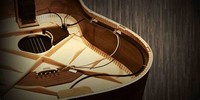Facts about Guitar
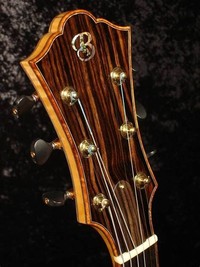
The headstock is located at the end of the guitar neck furthest from the body.

Many other open tunings, where all of the strings are tuned to a similar note or chord, are popular for slide guitar playing.

The lower fretboard action (the height of the strings from the fingerboard) and its electrical amplification lend the electric guitar to some techniques which are less frequently used on acoustic guitars.

Many guitarists use a long established (centuries old) tuning variation where the lowest string is 'dropped' two semi-tones down.

Inlays range from simple plastic dots on the fretboard to fantastic works of art covering the entire exterior surface of a guitar (front and back).
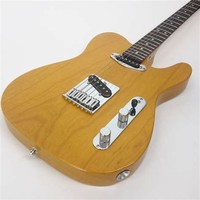
The type and model of pickups used can greatly affect the tone of the guitar.

Most modern guitars feature a 12" neck radius, while older guitars from the '60s and '70s usually feature a 6"-8" neck radius.

The Vibrato (pitch bend) unit found on many electric guitars has also had slang terms applied to it, such as "tremolo bar (or arm)," "sissy bar," "whammy handle," and "whammy bar."

Instruments similar to the guitar have been popular for at least 5,000 years, as evident in ancient carvings and statues recovered from the ancient Iranian capital, Susa.

To raise the guitar's pitch by one semitone, the player would clip the capo onto the fret board just below the first fret.

Frets are usually the first permanent part to wear out on a heavily played electric guitar.
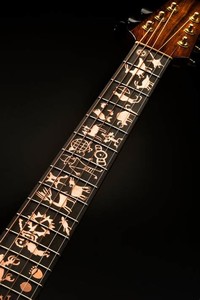
The typical locations for inlay are on the fretboard, headstock, and around the soundhole (called a rosette on acoustic guitars).
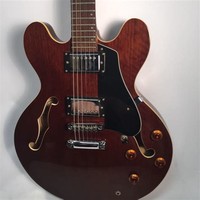
The most common woods used for electric guitar body construction include maple, basswood, ash, poplar, alder, and mahogany.

Guitar strings are strung parallel to the neck, whose surface is covered by the fingerboard (fretboard).
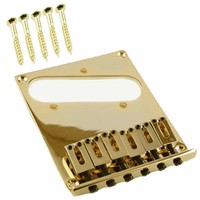
On almost all modern electric guitars, the bridge is adjustable for each string so that intonation stays correct up and down the neck.

The guitar is a musical instrument, used in a wide variety of musical styles, as acoustic and electric models, in both classical and contemporary forms.

Seven-string solid body electric guitars were developed in the 1990s (earlier in jazz) to achieve a much darker sound through extending the lower end of the guitar's range.
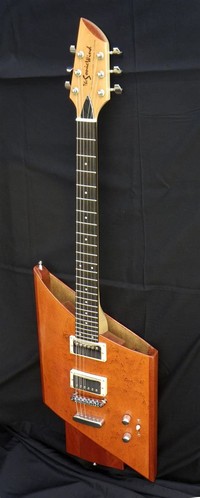
Today, it is not uncommon to see at least one guitar in most homes or to meet someone with at least intermediate skills in its use.

One notable advancement however was the advent of the electric guitar, patented by George Beauchamp in 1936.

On guitars that have them, these components and the wires that connect them allow the player to control some aspects of the sound like volume or tone.
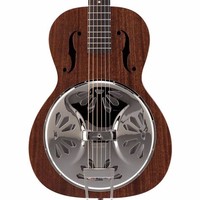
The shape and resonance of the guitar itself creates acoustic amplification.
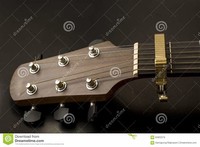
A guitar's frets, fretboard, tuners, headstock, and truss rod, all attached to a long wooden extension, collectively comprise its neck.

Adjusting the truss rod affects the intonation of a guitar as well as affecting the action (the height of the strings from the fingerboard).

The body of the instrument is a major determinant of the overall sound variety for acoustic guitars.

The resulting pitch bend is evocative of the sound of the pedal steel guitar.

The sound hole is normally a round hole in the top of the guitar (under the strings), though some may have different placement, shapes or multiple holes.
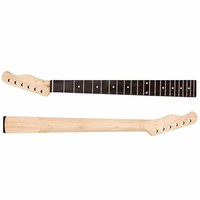
Frets are available in several different gauges, depending on the type of guitar and the player's style.

On acoustic guitars and many electric guitars, the pickguard is mounted directly to the guitar top, while on guitars with carved tops (for example, the Gibson Les Paul), the pickguard is elevated.
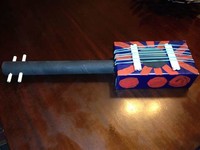
The guitar became a household instrument beginning in the 1950s, when its use in rock and roll made it both fashionable and accessible to anyone keen to play.

Guitarists typically use one hand to pluck the strings and the other to depress the strings against the fretboard.

Solid linings are often used in classical guitars, while kerfed lining is most often found in steel string acoustics.

By the end of the eighteenth century and the beginning of the nineteenth, an instrument that would unmistakably be recognized by today's individual as a guitar began to appear.
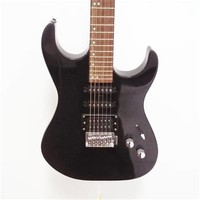
The electric guitar is used extensively in jazz, blues, and rock and roll, and was commercialized by the Gibson Guitar Corporation together with Les Paul and independently by Leo Fender.

A minority however believe that left-handed people should learn to play "conventional" guitars strung in the manner used by right-handed people, simply to standardize the instrument.

Many acoustic guitars are available today with built-in electronics and power to enable amplification.

Often the edges of the guitar around the neck and body and down the middle of the back are inlaid.
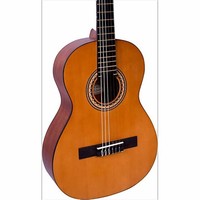
Almost all acoustic guitars, with the primary exception of Taylors, have glued (otherwise known as set) necks, while electric guitars are constructed using both types.

A distinctly different form of mechanical vibrato found on some guitars is the Bigsby vibrato tailpiece, commonly called Bigsby.

The rigidity of the neck with respect to the body of the guitar is one determinant of a good instrument versus a poor one.

The guitar top, or soundboard, is a finely crafted and engineered element often made of tonewood like spruce, red cedar or mahogany.

Most classical guitars do not have truss rods, as the nylon strings do not put enough tension on the neck for one to be needed.

Many guitars feature other layouts as well, including six-in-line (featured on Fender Stratocasters) tuners or even "4+2" (Ernie Ball Music Man).
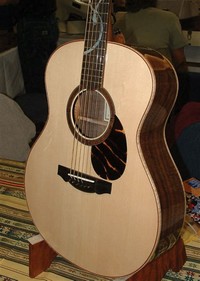
The pickguard is more often than not used in styles such as flamenco, which tends to use the guitar as a percussion instrument at times, rather than for instance, a classical guitar.

The sides (also known as wings) of the guitar are then glued to this central piece.

Large guitar manufacturers often issue these guitars to celebrate a significant historical milestone.

The latter two slang terms led stompbox manufacturers to use the term 'whammy' in coming up with a pitch raising effect introduced by popular guitar effects pedal brand "Digitech."

Pickups are electronic devices attached to a guitar that detect (or "pick up") string vibrations and allow the sound of the string to be amplified.

Some guitar players (notably Steve Vai and Sam Rivers, bassist of rock group Limp Bizkit) put LEDs in the fretboard as inlays to produce a unique lighting effect onstage.

Electric guitars can have solid, semi-hollow, or hollow bodies, and produce little sound without amplification.

The electric bass guitar is similar in tuning to the traditional double bass viola.

The majority of the sound is caused by vibration of the guitar top as the energy of the vibrating strings is transferred to it.

Some guitars need a battery to power their pickups and/or pre-amp; these guitars are referred to as having "active electronics," as opposed to the typical "passive" circuits.
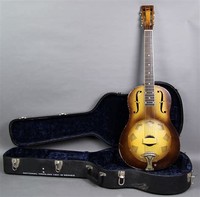
The body of an acoustic guitar is a resonating chamber which projects the vibrations of the body through a sound hole, allowing the acoustic guitar to be heard without amplification.

An instrument that is played exclusively in this manner, (using a metal bar) is called a steel guitar or pedal steel.

String instrument (plucked, nylon stringed guitars usually played with fingerpicking, and steel-, etc.
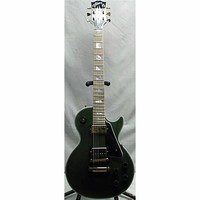
Most electric guitar bodies are made of wood with a plastic pick guard.
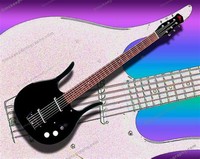
The guitar usually has six strings or in the case of a base or tenor guitar, four.

The distinctive guitar sound of Billy Gibbons is attributed to using a quarter (United States quarter]] or peso as a pick.

Bolt-on necks, though they are historically associated with cheaper instruments, do offer greater flexibility in the guitar's set-up, and allow easier access for neck joint maintenance and repairs.

Such a scheme is very close to piano keys colouring (which involves black coloring for sharps that pentatonic consists of) and of some use on classic guitars.

Some very limited edition high-end or custom-made guitars have artistic inlay designs that span the entire front (or even the back) of the guitar.

The Feng-huang, unlike the phoenix which dies and is reborn, is truly immortal although it only appears in times of peace and prosperity.

Another type of neck, only available for solid body electric guitars, is the Neck-through-body construction.

Purfling can also appear on the back of an acoustic guitar, marking the edge joints of the two or three sections of the back.

Single coil pickups, one magnet wrapped in copper wire, are used by guitarists seeking a brighter, twangier sound with greater dynamic range.

In 1850, the guitar went through its most significant breakthrough when Antonio Torres Jurado refined the instrument to include as many as seven struts spread out like a fan under the soundboard.

The soundhole designs found on acoustic guitars vary from simple concentric circles to delicate fretwork (referred to as a Rosette).

On both electric and acoustic guitars, the bridge holds the strings in place on the body.

There have been only minor modifications since the middle 1800's, but for the most part the modern guitar resembles its 150-year-old ancestry.

Due to the guitar's wide range and generally facile usability, it has become a staple in the world of art and entertainment, and a significant tool in the artist's pursuit to manifest beauty through sound.

At the end of the seventeenth century the vihuela was slowly replaced by the four and five course guitars (which had seven and nine strings respectively), as this gave it more flexibility and range.

Guitars have frets on the fingerboard to fix the positions of notes and scales, which gives them equal temperament.
The guitar is a string instrument which is played by plucking the strings. The main parts of a guitar are the body, the fretboard, the headstock and the strings. Guitars are usually made from wood or plastic. Their strings are made of steel or nylon.
Realistically, it cannot be traced back further than the 15th Century. It is thought to have been invented by the people of Malaga. This early instrument was a "four course" guitar, from which the ukulele is derived. The first guitars were very small, and were originally strung with four pair of strings.
Longitudinal Waves and Guitar Strings. A sound wave is produced by a vibrating object. As a guitar string vibrates, it sets surrounding air molecules into vibrational motion. The frequency at which these air molecules vibrate is equal to the frequency of vibration of the guitar string.
The majority of material comprising a modern guitar is still wood. Typical woods used for the body and neck of a guitar today are Mahogany, Ash, Maple, Basswood, Agathis, Alder, Poplar, Walnut, Spruce, and holly. Woods from around the world are also incorporated into modern acoustic and electric guitars.
Although the development of the earliest "guitars" is lost in the history of medieval Spain, two instruments are commonly cited as their most influential predecessors, the European lute and its cousin, the four-string oud; the latter was brought to Iberia by the Moors in the 8th century.
MapleFlame Maple on an acoustic guitar back—image c/o Josred Handmade Guitars .Mahogany used as the body and top wood on a Gibson Les Paul.Basswood used for the guitar body on an Ibanez RG8.A Stratocaster body made out of Alder.A Telecaster body made from Swamp Ash — image c/o chrisbewick.com.
Body, Neck and Fingerboard.Body Woods. Alder. ... Basswood. Inexpensive tone wood, which is easy to work with in the factory, easy to cut, sand and finish. ... Mahogany. Mahogany, mainly used in the acoustic world, for back and sides. ... Swamp Ash. ... Walnut. ... Koa. ... Maple. ... Rosewood.More items...
